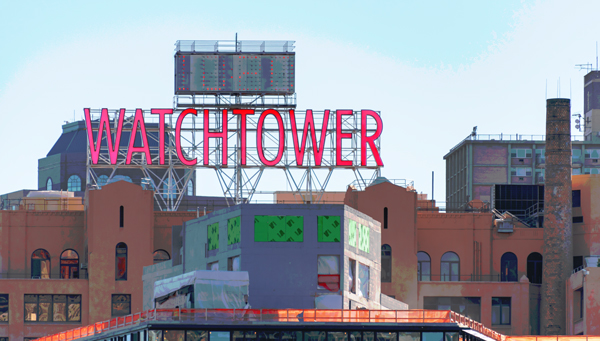Trending
End is nigh for Watchtower sign: Iconic placard to come down after $340M sale
Kushner Companies, CIM Group and LIVWRK plan to turn building into office complex

The iconic Watchtower sign, a glowing fixture over Brooklyn Heights, will soon disappear from the skyline.
Earlier this month, the Jehovah’s Witnesses filed a permit application seeking to remove the 15-foot-tall letters from the roof of the organization’s now-former headquarters. The request comes nearly a year after developers Kushner Companies, CIM Group and LIVWRK Holdings purchased the building at 25-30 Columbia Heights for $340 million.
Removal of the letters will cost an estimated $70,500, according to documents filed with the city’s Department of Buildings. The sign’s framework will remain in place, according to the application filed June 9.
The developers — who collectively go by Columbia Heights Associates — declined to comment. Representatives for the Jehovah’s Witnesses didn’t return messages seeking additional information on the sign’s future.
The sign has hovered over Brooklyn Heights for nearly 50 years. The religious organization purchased the building in 1969 from pharmaceutical giant E.R. Squibb & Sons. At the time, Squibb had its own sign on the roof.
According to the Witnesses’ website, the sign’s red neon lights were swapped for LEDs in 2009 — saving the organization some $4,000 in annual maintenance costs.
The departure of what many have described as a Brooklyn landmark is not necessarily a surprise. When the new owners unveiled plans in May to convert the building into a 635,000-square-foot office complex — dubbed “Panorama” — renderings show some sort of sign but not the iconic letters. At the time, the Brooklyn Eagle speculated that one of the building’s new tenants would secure the rights to put their own sign in the old one’s place.
In a video posted on the religious group’s website, Vernon Wisegarver, one of the group’s leaders, hinted that the sign’s time with the building was limited: “As for its future, it will probably remain with that building as long as we remain with that building.”




